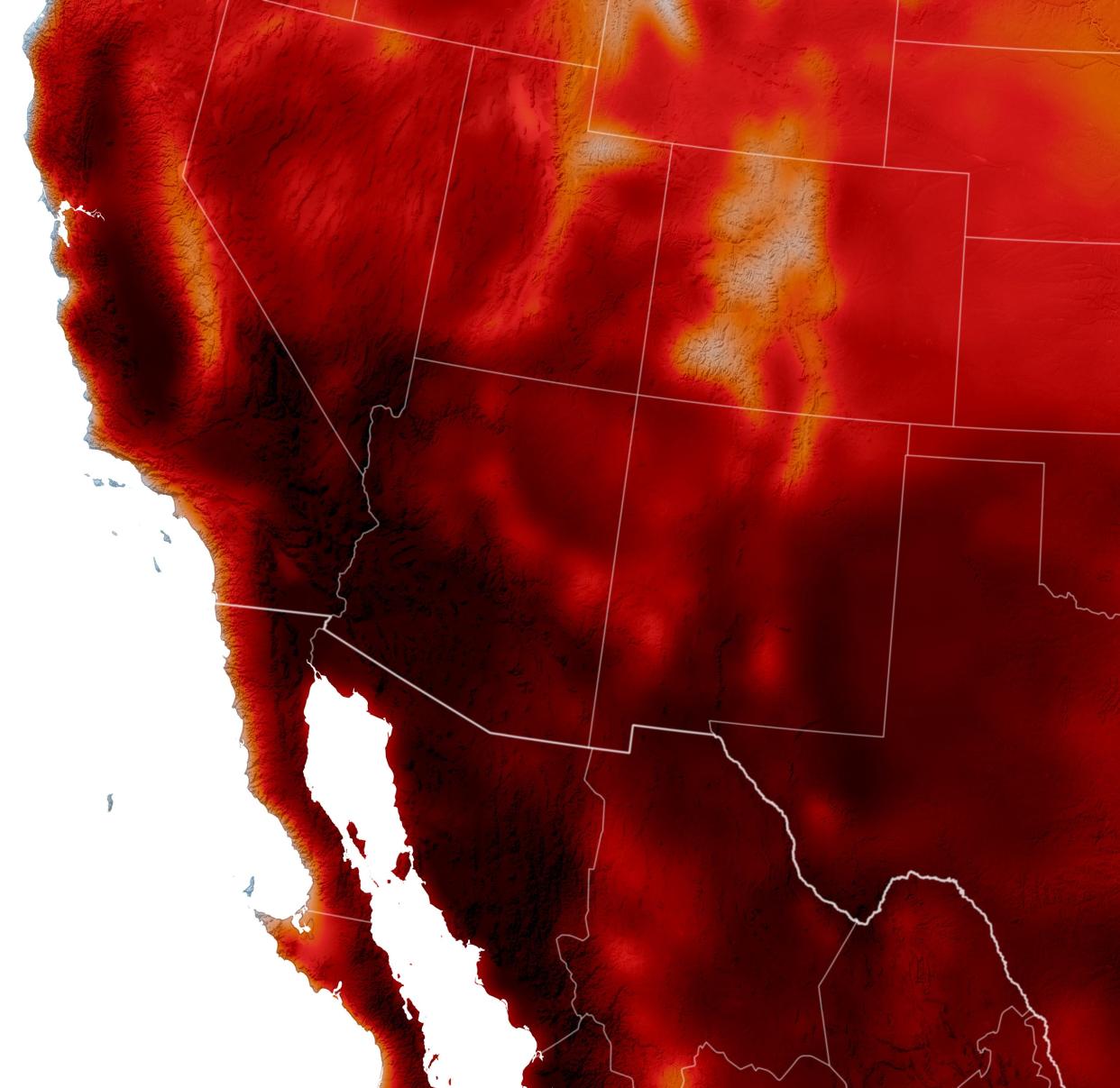Can you blame heat wave on climate change? Eye-popping numbers suggest so.
Here's a line you can use at the pool or beach this weekend: "Yep, it's climate change."
The deadly heat wave that scorched much of North America in early May and early June – and is still baking the central and eastern U.S. – was made 35 times more likely because of human-caused climate change, a scientific study released Thursday says.
The heat wave has killed at least 125 people and led to thousands of heatstroke cases in Mexico, where the heat was particularly intense. Scientists say heat waves will continue to intensify if the world continues to unleash climate-warming emissions from the burning of fossil fuels.
The study was done by World Weather Attribution, an international collaboration of scientists that studies the influence of climate change on extreme weather events.
Deadly and record-breaking heat
"Potentially deadly and record-breaking temperatures are occurring more and more frequently in the U.S., Mexico and Central America due to climate change," said study co-author Izidine Pinto, a researcher at the Royal Netherlands Meteorological Institute.
“The results of our study should be taken as another warning that our climate is heating to dangerous levels," he said.
The study focused on the Southwest U.S. and Mexico, as well as Guatemala, Belize, El Salvador and Honduras, where temperatures were also extreme.
The heat has not been confined to the Americas: May this year was the hottest May on record globally and the 12th month in a row a hottest-month record was broken.
How a heat dome has played a part
According to the World Weather Attribution group, the area has been underneath a large and lingering region of high pressure known as a heat dome, which occurs when hot air is trapped close to the ground and further heated under blue skies and sunshine.
"Whilst heat domes have a well-known mechanism for intensifying heat waves, these past weeks have seen records broken in both daytime and nighttime temperatures in several countries, including Mexico, Guatemala, Honduras and in the southwestern US," the group said in a statement.
They also noted that a heat wave such as this one is four times more likely to occur today than it was in the year 2000.
“Unsurprisingly, heat waves are getting deadlier," study co-author Friederike Otto of Imperial College London said.
Otto added that since 2000, in just 24 years, June heat waves in North and Central America have become 1.4 degrees hotter, exposing millions more people to dangerous heat.

What do others say?
Brett Anderson, AccuWeather climate expert and senior meteorologist, said "climate change is clearly playing a role in enhancing this warming."
"As we continue to put more and more greenhouse gases into the atmosphere, these types of extreme heat and drought conditions across the Southwest and Mexico will almost certainly become more common and perhaps even the norm by the end of this century or even much earlier," Anderson said in an e-mail to USA TODAY.
University of Southern California marine studies chair Carly Kenkel, who wasn’t part of the attribution team’s study, told the Associated Press the analysis is “the logical conclusion based on the data.”
“We’re looking at a shifting baseline – what was once extreme but rare is becoming increasingly common.”
This article originally appeared on USA TODAY: Eye-popping data details climate change's drastic impact on heat wave
